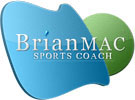

Bounce Back After Injury
James Watt provides advice on how to mentally and physically bounce back after injury.
Athletes and coaches are all too familiar with the word injury, all it implies, and all it entails. Training and knowledge can be key to preventing an injury, but they can still happen anytime. A constant element of unpredictability is involved in athletic performance at any level. Understanding how to overcome injury can help prepare athletes for what their minds and bodies will be up against as they rehab any potential injuries. Although the physicality of dealing with an injury is highly critical, so are the mental components that athletes face.
There is much to understand about how to cope with the sometimes harsh realities of having a body that cannot safely achieve all that the mental demands of it or that it is used to being able to accomplish with ease.
Physical Rehabilitation
While an injury can take only seconds to occur, rehabbing one can take considerably longer. Work, time, energy, and perseverance are essential during rehabilitation. Although the training involved can often be predictable and easily associated with the athlete's sport, trainers are beginning to look outside the box when it comes to rehab to create more well-rounded athletes and strengthen the body without putting it through any additional shock or strain.
Getting outdoors is one way to modernise the rehab process. The integration of technology into the world of sports is one-way. Coaches, athletes, and trainers are setting out to bridge the gap between tried-and-true methods and more innovative ones. Sports rehab aims to get an injured athlete back to training and competition without putting them at risk for additional undue injury.
These pieces of equipment allow riders to go through the motions of cycling but use as much or as little energy as they desire. Since the motor on these bikes provides a backup assist that can be modified, they are great for monitoring progress. Trainers can assign their clients the same exercises and processes, and report where and when they learn more on the bike.
Types of Physical Rehab
Treatment plans are customised based on the specific injury type and the individual requiring rehab. Several approaches and practices can be combined to provide relief and healing. Manual therapy may include massage or joint mobilisations. It is a hands-on passive movement technique that will stimulate the joints when a range of motion is lacking.
Modalities are various methods of electrical, thermal, or mechanical energy treatments. They can help reduce pain, decrease inflammation, and improve circulation, helping your muscles remember how your body worked them before your injury. Therapeutic exercises are included in treatment plans to restore movement, and the patient can hope to regain and eventually build strength to prevent further injury. Both acute and chronic injuries can benefit from therapeutic exercise.
What to Expect
By definition, physical therapy is a healthcare specialty aimed at diagnosing and treating individuals with health conditions that limit their ability to move and perform daily activities. First and foremost, you can expect professional attention and a professional approach to your injury's specifics and correcting the problem. Timeline is typically the first topic that patients inquire about, and this question does not have a one-size-fits-all answer.
The trajectory of your injury and rehabbing it will be based on how severe your overall physical health is and the result you are trying to reach. You can expect your sessions to be varied based on length and frequency, and change as your progress improves or weakens.
Since performance is the desired result, dedication to a speedy recovery will increase sessions with your physical therapist. As an injured athlete, you can also expect some of your rehab experience to include mental and emotional therapy in tandem with the physical work to overcome your injury.
Psychological Skills to Combat Injury
A great comeback story is not just about restoring an athlete to where they were pre-injury; it is also about surpassing their previous benchmark to excel beyond expectations. Post-injury comeback's self-related expectations can often be more significant than external ones. Carrying an athletic injury's mental load can negatively affect rehabilitation if you let it. Honour your feelings of defeat, but focus on the restoration plan, not the initial setback. It is natural to feel disappointed that you cannot participate in your sport as you are used to, but giving yourself grace and patience on the road to recovery will help you endure the rehab plan created for you.
A lot of change can occur on a team or in a sport while handling your injury; reintegration into your old role will require mental strength and flexibility. Step one is understanding that you may not be walking back into the same scenario that existed when you left. A lack of confidence or decreased feeling of knowledge of your exact role and contribution are natural side effects of having been out on injured leave.
Triggers that may or may not have existed preinjury also deserve your attention and acknowledgement. Elements of the game that previously did not affect you may do so now, or vice versa. Keeping a sharp mind geared towards life after an injury is the key to keeping it open. Expecting the landscape and how you navigate it to look different can shield you from the unexpected, which is something that mentally holds you back after you have done the physical work to get back in the game.
Page Reference
If you quote information from this page in your work, then the reference for this page is:
- WATT, J. (2021) Bounce Back After Injury [WWW] Available from: https://www.brianmac.co.uk/articles/article617.htm [Accessed
About the Author
James Watt is a certified personal trainer with 10+ years of experience in the fitness industry. He is an expert in sports conditioning and strength training, among other disciplines.